#loumystretchandgrowth
Text
Yoga For Back Pain

Here are some yoga poses that can help relieve lower back pain:
Child's Pose (Balasana): Start on your hands and knees and slowly lower your hips back toward your heels, stretching your arms out in front of you. This pose can help stretch and lengthen the spine, providing relief for lower back pain.
Cat-Cow Stretch (Chakravakasana): Start on your hands and knees and alternate between arching your back up towards the ceiling (cow) and rounding it down towards the floor (cat). This gentle movement helps to stretch and strengthen the muscles in your back.
Downward-Facing Dog (Adho Mukha Svanasana): Start on your hands and knees, tuck your toes under and lift your hips up and back, straightening your arms and legs. This pose helps to stretch the entire spine and relieve tension in the back.
Cobra Pose (Bhujangasana): Lie on your stomach with your hands under your shoulders and slowly lift your chest up, keeping your elbows close to your sides. This pose helps to strengthen the muscles in your back and relieve pain.
Sphinx Pose (Salamba Bhujangasana): Lie on your stomach with your elbows under your shoulders and your forearms on the ground. Lift your chest up while keeping your lower ribs and pelvis on the ground. This pose helps to strengthen the spine and relieve tension in the back.
Pigeon Pose (Eka Pada Rajakapotasana): From a low lunge position, slide your right knee forward between your hands and extend your left leg back behind you. Lower down onto your forearms or a block, and hold for a few deep breaths. Repeat on the other side.
Thread the Needle Pose (Parsva Balasana): Start on your hands and knees and thread your right arm under your left arm, lowering your right shoulder and ear to the ground. Hold for a few deep breaths, then repeat on the other side.
Supine Twist (Supta Matsyendrasana): Lie on your back with your knees bent and feet on the ground. Drop your knees to the right, twisting your spine and extending your left arm out to the side. Hold for a few deep breaths, then repeat on the other side.
Remember, it's important to listen to your body and not push yourself too far in these poses. If you experience any pain or discomfort, stop immediately and seek advice from a yoga teacher or healthcare professional.
#mobility#anklemobility#calfworkout#calvesworkout#calves#shinsplints#mobilitytraining#mobilitywod#mobilityexercises#stretch#stretches#stretching#stretchingexercises#stretchingroutine#statenisland#newyorkcity#loumystretchandgrowth#stretchandgrow#movementismedicine#movementculture#movementheals#workoutathome#hamstringstretch#prehab#rehab#legstretch
11 notes
·
View notes
Text
8 steps yoga poses for back pain
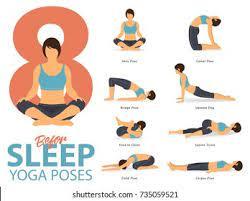
here are 8 yoga poses in a sequence that can help relieve back pain:
Child's Pose (Balasana): Start on your hands and knees and lower your hips back towards your heels while stretching your arms out in front of you. Take a few deep breaths here, feeling the stretch in your lower back.
Cat-Cow Stretch (Chakravakasana): Move into a tabletop position on your hands and knees, and alternate between arching your back up towards the ceiling (cow) and rounding it down towards the floor (cat). Repeat for a few rounds, focusing on the movement of your spine.
Downward-Facing Dog (Adho Mukha Svanasana): From tabletop, tuck your toes under and lift your hips up and back, straightening your arms and legs. Hold for a few deep breaths, feeling the stretch in your entire spine.
Low Lunge (Anjaneyasana): Step your right foot forward between your hands and lower your left knee down to the ground. Place your hands on your right knee and lift your chest up, feeling the stretch in your left hip flexor and right hamstring. Hold for a few deep breaths, then repeat on the other side.
Triangle Pose (Trikonasana): From a standing position, step your feet wide apart and turn your right foot out to the side. Reach your right hand down towards your shin or ankle, and extend your left arm up towards the ceiling. Hold for a few deep breaths, then repeat on the other side.
Extended Puppy Pose (Uttana Shishosana): Start on your hands and knees and walk your hands forward, lowering your chest down towards the ground while keeping your hips over your knees. Hold for a few deep breaths, feeling the stretch in your entire spine.
Bridge Pose (Setu Bandha Sarvangasana): Lie on your back with your knees bent and feet flat on the ground. Press into your feet to lift your hips up, keeping your shoulders and head on the ground. Hold for a few deep breaths, feeling the stretch in your lower back and thighs.
Corpse Pose (Savasana): Lie on your back with your legs extended and your arms at your sides. Close your eyes and take a few deep breaths, allowing your body to relax completely.
Remember, it's important to listen to your body and not push yourself too far in these poses. If you experience any pain or discomfort, stop immediately and seek advice from a yoga teacher or healthcare professional.
#mobility#anklemobility#calfworkout#calvesworkout#calves#shinsplints#mobilitytraining#mobilitywod#mobilityexercises#stretch#stretches#stretching#stretchingexercises#stretchingroutine#statenisland#newyorkcity#loumystretchandgrowth#stretchandgrow#movementismedicine#movementculture#movementheals#workoutathome#hamstringstretch#prehab#rehab#legstretch
0 notes
Text
Back Pain Relief Tips and Tricks

here are some tips for relieving back pain:
Exercise regularly: Regular exercise can help strengthen your back muscles and reduce the risk of injury. Low-impact exercises like swimming, walking, or yoga can be particularly helpful.
Maintain good posture: Avoid slouching or leaning forward when sitting or standing for long periods. Use a chair with good back support and keep your feet flat on the floor.
Use heat or cold therapy: Applying heat or cold to the affected area can help reduce pain and inflammation. Use a heating pad or hot water bottle for 15-20 minutes at a time, or wrap an ice pack in a towel and apply for 10-15 minutes at a time.
Practice relaxation techniques: Stress can cause tension in the muscles of the back, exacerbating pain. Try relaxation techniques like deep breathing, meditation, or yoga to help reduce stress and tension.
Consider over-the-counter pain relief: Over-the-counter pain medications like ibuprofen or acetaminophen can help relieve pain and reduce inflammation.
Get a massage: A massage therapist can help loosen tight muscles and improve circulation, which can relieve pain and promote healing.
Maintain a healthy weight: Excess weight can put strain on the back muscles and spine. Maintaining a healthy weight can help reduce the risk of back pain.
Remember, if your back pain is severe or persists for more than a few days, it's important to seek medical advice from a doctor or physical therapist.
#mobility#anklemobility#calfworkout#calvesworkout#calves#shinsplints#mobilitytraining#mobilitywod#mobilityexercises#stretch#stretches#stretching#stretchingexercises#stretchingroutine#statenisland#newyorkcity#loumystretchandgrowth#stretchandgrow#movementismedicine#movementculture#movementheals#movementismedicine#workoutathome#hamstringstretch#prehab#rehab#legstretch
#mobility#anklemobility#calfworkout#calvesworkout#calves#shinsplints#mobilitytraining#mobilitywod#mobilityexercises#stretch#stretches#stretching#stretchingexercises#stretchingroutine#statenisland#newyorkcity#loumystretchandgrowth#stretchandgrow#movementismedicine#movementculture#movementheals#workoutathome#hamstringstretch#prehab#rehab#legstretch
0 notes
Text
Lower Back Pain Excersize
Exercise can be helpful in relieving and preventing lower back pain. Here are some exercises that can be beneficial:
Pelvic tilt: Lie on your back with your knees bent and feet flat on the ground. Tighten your abdominal muscles and press your lower back into the ground. Hold for 5 seconds and release.
Knee-to-chest stretch: Lie on your back with your knees bent and feet flat on the ground. Bring one knee up to your chest and hold for 15-30 seconds. Repeat with the other leg.
Bird dog: Start on your hands and knees. Lift your right arm and left leg straight out, keeping your back straight. Hold for a few seconds and then switch sides.
Bridge: Lie on your back with your knees bent and feet flat on the ground. Lift your hips up toward the ceiling, squeezing your glutes. Hold for a few seconds and then lower back down.
Cat-cow stretch: Start on your hands and knees. Arch your back up like a cat and then lower it down like a cow. Repeat several times.
Cobra pose: Lie on your stomach with your hands under your shoulders. Press up through your hands, lifting your chest and arching your back. Hold for a few seconds and then lower back down.
Child's pose: Kneel on the ground and stretch your arms forward, lowering your forehead to the mat. Hold for several seconds.
Remember to start slowly and gradually increase the intensity and duration of your exercises. If you experience pain or discomfort during any exercise, stop and consult with a medical professional.
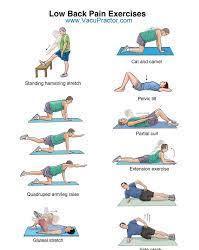
#.#mobility#anklemobility#calfworkout#calvesworkout#calves#shinsplints#mobilitytraining#mobilitywod#mobilityexercises#stretch#stretches#stretching#stretchingexercises#stretchingroutine#statenisland#newyorkcity#loumystretchandgrowth#stretchandgrow#movementismedicine#movementculture#movementheals#workoutathome#hamstringstretch#prehab#rehab#legstretch#backpainrelief#clean eating#bodybuilding
0 notes
Text
Lower Back Pain Relief Tips
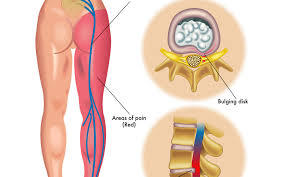
Lower back pain can be a common and uncomfortable issue. Here are some tips for relieving lower back pain:
Stretching: Gentle stretching can help to ease lower back pain. Try stretching your hamstrings, hip flexors, and lower back muscles.
Heat and cold therapy: Applying heat or cold to your lower back can help to reduce pain and inflammation. You can use a heating pad or a cold pack for this.
Good posture: Maintaining good posture can help to prevent and relieve lower back pain. Keep your shoulders back, spine straight, and feet flat on the ground when sitting or standing.
Exercise: Gentle exercise can help to strengthen the muscles in your lower back, which can reduce pain. Walking, swimming, and yoga are all good options.
Over-the-counter pain relief: Over-the-counter pain relief medication, such as ibuprofen or acetaminophen, can help to reduce lower back pain. However, it's important to use these medications as directed.
Massage: Massage can help to ease tension in your lower back muscles, which can relieve pain. You can use a foam roller or see a professional masseuse.
Improve sleeping habits: Sleeping on a firm mattress with a pillow under your knees can help to relieve lower back pain.
Reduce stress: Stress can cause tension in your muscles, including your lower back. Try to find ways to reduce stress, such as practicing mindfulness or yoga.
Remember to consult with a medical professional if your lower back pain persists or becomes severe.
#.#mobility#anklemobility#calfworkout#calvesworkout#calves#shinsplints#mobilitytraining#mobilitywod#mobilityexercises#stretch#stretches#stretching#stretchingexercises#stretchingroutine#statenisland#newyorkcity#loumystretchandgrowth#stretchandgrow#movementismedicine#movementculture#movementheals#workoutathome#hamstringstretch#prehab#rehab#legstretch
0 notes
Text
10 yoga for back pain fix
Yoga can be a helpful practice for relieving back pain and improving flexibility and strength. Here are 10 yoga poses that may help:
Child's Pose: Kneel on the floor and stretch your arms forward, lowering your forehead to the mat.
Cat-Cow Pose: Come onto your hands and knees, rounding your spine on the exhale and arching your back on the inhale.
Downward-Facing Dog: Start on your hands and knees, then lift your hips up and back, straightening your legs and pressing your hands into the mat.
Cobra Pose: Lie on your stomach and press up through your hands, lifting your chest and arching your back.
Standing Forward Bend: Stand with your feet hip-width apart and fold forward, reaching for your toes.
Triangle Pose: Stand with your feet wide apart, turn your right foot out, and reach your right hand toward your right foot. Look up at your left hand.
Pigeon Pose: Start in a lunge position with your right foot forward, then bring your left knee forward and stretch your right leg back. Fold forward over your right leg.
Bridge Pose: Lie on your back with your knees bent and feet on the floor, then lift your hips up toward the ceiling.
Seated Forward Bend: Sit with your legs straight out in front of you and fold forward, reaching for your toes.
Legs-Up-The-Wall Pose: Lie on your back with your legs up against a wall, forming a 90-degree angle with your body.
Remember to listen to your body and not push yourself too far. If you experience pain or discomfort during any pose, stop and consult with a medical professional.

#.#mobility#anklemobility#calfworkout#calvesworkout#calves#shinsplints#mobilitytraining#mobilitywod#mobilityexercises#stretch#stretches#stretching#stretchingexercises#stretchingroutine#statenisland#newyorkcity#loumystretchandgrowth#stretchandgrow#movementismedicine#movementculture#movementheals#workoutathome#hamstringstretch#prehab#rehab#legstretch
0 notes
Text
What is Sciatica Nerv?
The sciatic nerve is the largest and longest nerve in the human body, running from the lower back down through the hips, buttocks, and legs. It is made up of multiple nerve roots that originate in the spinal cord and exit through the lower back.
The sciatic nerve plays a vital role in transmitting sensory and motor signals between the spinal cord and the muscles, skin, and other tissues of the lower extremities. It is responsible for controlling the movement and sensation in the legs and feet.
Sciatica occurs when the sciatic nerve becomes compressed or irritated, resulting in pain, numbness, tingling, or weakness in the lower back, buttocks, and legs. This compression or irritation can be caused by a variety of factors, including a herniated or bulging disc, spinal stenosis, or degenerative disc disease.
Treatment for sciatica typically involves addressing the underlying cause of the compression or irritation, which may include rest, physical therapy, medication, or surgery. Lifestyle changes such as maintaining a healthy weight, practicing good posture, and getting regular exercise can also help prevent and manage sciatica.
If you are experiencing persistent back pain that radiates down through your buttocks and legs, or if you have numbness or weakness in your legs, it's important to seek medical attention. A healthcare professional can help determine the cause of your symptoms and recommend an appropriate treatment plan.
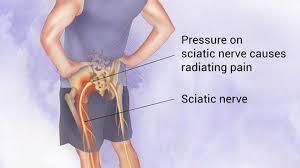
#mobility#anklemobility#calfworkout#calvesworkout#calves#shinsplints#mobilitytraining#mobilitywod#mobilityexercises#stretch#stretches#stretching#stretchingexercises#stretchingroutine#statenisland#newyorkcity#loumystretchandgrowth#stretchandgrow#movementismedicine#movementculture#movementheals#workoutathome#hamstringstretch#prehab#rehab#legstretch#backpainrelief#clean eating#half marathon#healthy eating
0 notes
Text
write about yoga for back pain
Yoga has been shown to be an effective practice for managing and reducing back pain. The gentle stretches and movements involved in yoga can help alleviate tension in the muscles of the back, while also promoting relaxation and reducing stress.
There are several specific yoga poses that can be particularly helpful for those experiencing back pain. One such pose is the cat-cow stretch, which involves getting on all fours and alternately arching and rounding the back. This movement can help stretch and strengthen the muscles of the spine, while also promoting flexibility.
Another helpful pose for back pain is downward-facing dog, which involves placing the hands and feet on the ground and lifting the hips up into the air. This pose can help lengthen the spine and relieve tension in the lower back.
Other beneficial yoga poses for back pain include child's pose, which involves sitting back on the heels with arms extended forward, and the cobra pose, which involves lying on the stomach and pressing the hands into the ground to lift the chest up.
In addition to these poses, practicing yoga regularly can help improve posture and strengthen the muscles of the back and core, which can in turn help prevent future back pain.
It's important to remember that while yoga can be a helpful practice for managing back pain, it's always a good idea to consult with a healthcare professional before starting any new exercise routine. They can help you determine which poses are safe and effective for your specific condition, and can offer guidance on how to modify poses to accommodate any physical limitations.

#mobility#anklemobility#calfworkout#calvesworkout#calves#shinsplints#mobilitytraining#mobilitywod#mobilityexercises#stretch#stretches#stretching#stretchingexercises#stretchingroutine#statenisland#newyorkcity#loumystretchandgrowth#stretchandgrow#movementismedicine#movementculture#movementheals#workoutathome#hamstringstretch#prehab#rehab#legstretch
0 notes
Text
How do I lose weight and help accelerate metabolism?
To lose weight and accelerate your metabolism, there are a few key strategies you can incorporate into your daily routine:
Build lean muscle mass: Muscle burns more calories at rest than fat, so building lean muscle mass through strength training can help boost your metabolism. Incorporate strength training exercises into your routine at least 2-3 times per week.
Get enough protein: Protein is essential for building and repairing muscle tissue, which can help boost your metabolism. Aim for a protein source with every meal and snack, such as lean meat, fish, poultry, eggs, beans, or tofu.
Eat a balanced diet: A balanced diet that includes a variety of nutrient-dense foods can help support a healthy metabolism. Include plenty of fruits, vegetables, whole grains, lean proteins, and healthy fats in your diet.
Stay hydrated: Drinking enough water can help keep your metabolism functioning optimally. Aim for at least 8 glasses of water per day.
Get enough sleep: Lack of sleep can disrupt hormones that regulate appetite and metabolism, so getting enough sleep is important for maintaining a healthy weight and metabolism. Aim for 7-8 hours of sleep per night.
Incorporate cardiovascular exercise: Cardiovascular exercise such as running, cycling, or swimming can help burn calories and boost your metabolism. Aim for at least 150 minutes of moderate-intensity aerobic exercise or 75 minutes of vigorous-intensity aerobic exercise per week.
Remember, sustainable weight loss and a healthy metabolism require a long-term commitment to healthy habits. Consult with a healthcare professional or a registered dietitian for personalized advice and support on how to achieve your weight loss goals and maintain a healthy metabolism.
#mobility#anklemobility#calfworkout#calvesworkout#calves#shinsplints#mobilitytraining#mobilitywod#mobilityexercises#stretch#stretches#stretching#stretchingexercises#stretchingroutine#statenisland#newyorkcity#loumystretchandgrowth#stretchandgrow#movementismedicine#movementculture#movementheals#workoutathome#hamstringstretch#prehab#rehab#legstretch
0 notes
Text
Yoga for Back pain Relief
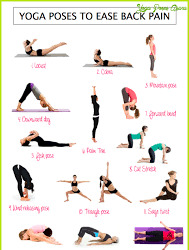
here are some yoga poses that can help relieve back pain:
Child's Pose (Balasana): Start on your hands and knees and slowly lower your hips back toward your heels, stretching your arms out in front of you. This pose can help stretch and lengthen the spine, providing relief for lower back pain.
Cat-Cow Stretch (Chakravakasana): Start on your hands and knees and alternate between arching your back up towards the ceiling (cow) and rounding it down towards the floor (cat). This gentle movement helps to stretch and strengthen the muscles in your back.
Downward-Facing Dog (Adho Mukha Svanasana): Start on your hands and knees, tuck your toes under and lift your hips up and back, straightening your arms and legs. This pose helps to stretch the entire spine and relieve tension in the back.
Cobra Pose (Bhujangasana): Lie on your stomach with your hands under your shoulders and slowly lift your chest up, keeping your elbows close to your sides. This pose helps to strengthen the muscles in your back and relieve pain.
Sphinx Pose (Salamba Bhujangasana): Lie on your stomach with your elbows under your shoulders and your forearms on the ground. Lift your chest up while keeping your lower ribs and pelvis on the ground. This pose helps to strengthen the spine and relieve tension in the back.
Remember, it's important to listen to your body and not push yourself too far in these poses. If you experience any pain or discomfort, stop immediately and seek advice from a yoga teacher or healthcare professional.#mobility#anklemobility#calfworkout#calvesworkout#calves#shinsplints#mobilitytraining#mobilitywod#mobilityexercises#stretch#stretches#stretching#stretchingexercises#stretchingroutine#statenisland#newyorkcity#loumystretchandgrowth#stretchandgrow #movementismedicine#movementculture#movementheals#movementismedicine#workoutathome#hamstringstretch#prehab#rehab#legstretch
#here are some yoga poses that can help relieve back pain:#Child's Pose (Balasana): Start on your hands and knees and slowly lower your hips back toward your heels#stretching your arms out in front of you. This pose can help stretch and lengthen the spine#providing relief for lower back pain.#Cat-Cow Stretch (Chakravakasana): Start on your hands and knees and alternate between arching your back up towards the ceiling (cow) and ro#Downward-Facing Dog (Adho Mukha Svanasana): Start on your hands and knees#tuck your toes under and lift your hips up and back#straightening your arms and legs. This pose helps to stretch the entire spine and relieve tension in the back.#Cobra Pose (Bhujangasana): Lie on your stomach with your hands under your shoulders and slowly lift your chest up#keeping your elbows close to your sides. This pose helps to strengthen the muscles in your back and relieve pain.#Sphinx Pose (Salamba Bhujangasana): Lie on your stomach with your elbows under your shoulders and your forearms on the ground. Lift your ch#Remember#it's important to listen to your body and not push yourself too far in these poses. If you experience any pain or discomfort#stop immediately and seek advice from a yoga teacher or healthcare professional.#mobility#anklemobility#calfworkout#calvesworkout#calves#shinsplints#mobilitytraining#mobilitywod#mobilityexercises#stretch#stretches#stretching#stretchingexercises#stretchingroutine#statenisland#newyorkcity
1 note
·
View note
Text
What is Back Pain?

Back pain is a common problem that affects millions of people worldwide. It can be caused by a variety of factors, including poor posture, muscle strain, injury, or medical conditions. Back pain can range from mild discomfort to debilitating pain that affects a person's daily life.
The back is a complex structure made up of bones, muscles, ligaments, and nerves that work together to support the body and allow movement. When any of these components are compromised, it can result in back pain. Some of the most common causes of back pain include:
Poor posture: Sitting or standing in a slouched position for extended periods of time can strain the muscles and ligaments in the back.
Muscle strain: Lifting heavy objects, sudden movements, or overuse can cause strain or injury to the muscles in the back.
Disc problems: Herniated or bulging discs can put pressure on nerves in the back and cause pain.
Arthritis: Osteoarthritis or rheumatoid arthritis can cause inflammation and pain in the joints of the back.
Medical conditions: Certain medical conditions such as fibromyalgia, scoliosis, or spinal stenosis can cause chronic back pain.
Treatment for back pain may include rest, physical therapy, medication, or surgery, depending on the cause and severity of the pain. In addition, lifestyle changes such as maintaining a healthy weight, practicing good posture, and getting regular exercise can help prevent and manage back pain.
Yoga has become a popular method for managing and reducing back pain, as it offers a gentle and low-impact form of exercise that can help alleviate tension in the muscles of the back, while also promoting relaxation and reducing stress. There are several specific yoga poses that can be particularly helpful for those
#mobility#anklemobility#calfworkout#calvesworkout#calves#shinsplints#mobilitytraining#mobilitywod#mobilityexercises#stretch#stretches#stretching#stretchingexercises#stretchingroutine#statenisland#newyorkcity#loumystretchandgrowth#stretchandgrow#movementismedicine#movementculture#movementheals#movementismedicine#workoutathome#hamstringstretch#prehab#rehab#legstretch
#Back pain is a common problem that affects millions of people worldwide. It can be caused by a variety of factors#including poor posture#muscle strain#injury#or medical conditions. Back pain can range from mild discomfort to debilitating pain that affects a person's daily life.#The back is a complex structure made up of bones#muscles#ligaments#and nerves that work together to support the body and allow movement. When any of these components are compromised#it can result in back pain. Some of the most common causes of back pain include:#Poor posture: Sitting or standing in a slouched position for extended periods of time can strain the muscles and ligaments in the back.#Muscle strain: Lifting heavy objects#sudden movements#or overuse can cause strain or injury to the muscles in the back.#Disc problems: Herniated or bulging discs can put pressure on nerves in the back and cause pain.#Arthritis: Osteoarthritis or rheumatoid arthritis can cause inflammation and pain in the joints of the back.#Medical conditions: Certain medical conditions such as fibromyalgia#scoliosis#or spinal stenosis can cause chronic back pain.#Treatment for back pain may include rest#physical therapy#medication#or surgery#depending on the cause and severity of the pain. In addition#lifestyle changes such as maintaining a healthy weight#practicing good posture#and getting regular exercise can help prevent and manage back pain.#Yoga has become a popular method for managing and reducing back pain#as it offers a gentle and low-impact form of exercise that can help alleviate tension in the muscles of the back#while also promoting relaxation and reducing stress. There are several specific yoga poses that can be particularly helpful for those exp@i
0 notes